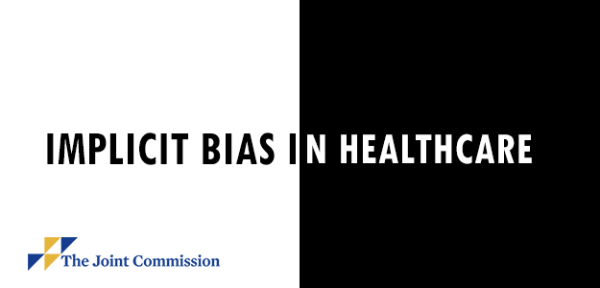On May 9, 2012, the Centers for Medicare and Medicaid Services (CMS) released pre-publication copies of two Final Rules designed to reduce the regulatory burdens related to the provision of healthcare and to “reflect the Centers for Medicare and Medicaid Services’ (CMS) commitment to the general principles of the President’s Executive Order 13563, released January 18, 2011, entitled “Improving Regulation and Regulatory Review.”
The first Final Rule (CMS-3244-F, Medicare and Medicaid Programs; Reform of Hospital and Critical Access Hospital Conditions of Participation) intends to eliminate certain “burdensome” Medicare Conditions of Participation (CoPs) for hospitals and critical access hospitals (CAH).
The second Final Rule (CMS-9070-F, Medicare and Medicaid Program; Regulatory Provisions to Promote Program Efficiency, Transparency, and Burden Reduction) seeks to “eliminate duplicative, overlapping, outdated, and conflicting regulatory requirements for health care providers and suppliers, including hospitals, ambulatory surgical centers, end-stage renal disease facilities, durable medical equipment suppliers.” This Final Rule eliminates “outmoded” infection control and emergency equipment requirements previously applicable to ambulatory surgical centers (ASC) and National Fire Protection Association (NFPA) Life Safety Code requirements for all but high risk end stage renal disease (ESRD) facilities.
Both Final Rules where published in the May 16, 2012 Federal Register. CMS-3244-F, Medicare and Medicaid Programs; Reform of Hospital and Critical Access Hospital Conditions of Participation, is available here. CMS-9070-F, Medicare and Medicaid Program; Regulatory Provisions to Promote Program Efficiency, Transparency, and Burden Reduction, is available here.
Both original Proposed Rules were published in the October 24, 2o11 Federal Register. CMS-3244-P, Medicare and Medicaid Programs; Reform of Hospital and Critical Access Hospital Conditions of Participation, is available here. CMS-9070-P, Medicare and Medicaid Program; Regulatory Provisions To Promote Program Efficiency, Transparency, and Burden Reduction, is available here.
Summary of Changes in the CMS Final Rule(s)
Governing Body Requirements
CMS proposed to allow a single governing body for hospitals in multi-hospital systems. In the Final Rule, CMS approved this revision and also added an additional requirement that at least one member of a hospital’s medical staff serve as a member of the multi-hospital system governing body in order to ensure communication and coordination between the system’s governing body and the medical staffs of the individual hospitals.
Patient’s Rights Requirements
CMS proposed to modify the reporting requirements when a patient death involves only the use of two-point wrist restraints and no use of seclusion. CMS finalized this proposed rule with minimal change, clarifying that hospitals need only to record in an internal log or other system soft wrist restraint-related deaths, and need not submit the information in the log to CMS or otherwise publicly release the information.
Medical Staff
CMS proposed to clarify that a hospital may grant privileges to both physicians and non-physicians to practice within their state scope of practice, regardless of whether they are also appointed to the medical staff. In the Final Rule, CMS removed the proposed concept of physicians and other clinicians being privileged to practice without appointment to the medical staff. Under the Final Rule, the medical staff may include other categories of non-physician clinicians. While the Final Rule falls short of requiring hospitals to place APRNs and other clinicians on the medical staff, the rule and its accompanying narrative does signal that CMS is supportive of APRNs, PAs, and other clinicians practicing to the full extent of their scope under state law.
Nursing Care Plan
CMS proposed to integrate the nursing care plan into the overall interdisciplinary care plan in those hospitals that use an interdisciplinary plan of care. The Final Rule permits either a stand-alone nursing care plan or one integrated into an interdisciplinary care plan.
Administration of Medications
The Final Rule allows hospitals to have an optional program for patients and support persons for self-administration of appropriate medications. The program must address the safe and accurate administration of specified medications, ensure a process for medication security, address self-administration training and supervision, and document medication self-administration.
Administration of blood transfusions and intravenous medications
The Final Rule eliminates the requirement for non-physician personnel to have special training in administering blood transfusions and intravenous medications. CMS also revised the requirement to clarify that those who administer blood transfusions and intravenous medications do so in accordance with state law and approved medical staff policies and procedures.
Orders by Other Practitioners
CMS proposed to allow all clinicians acting in accordance with state law and hospital privileges to provide orders for drugs and biologicals. The Final Rule allows for drugs and biologicals to be prepared and administered on the orders of non-physician practitioners provided such practitioners are acting pursuant to state law, hospital policy, and medical staff bylaws, rules and regulations. The non-physician practitioners may also document and sign these orders pursuant to state law and hospital policy.
Standing Orders
The Final Rule allows hospitals flexibility to use standing orders but adds a requirement for medical staff, nursing and pharmacy to approve written and electronic standing orders, order sets, and protocols. The rule also requires that orders and protocols be based on nationally recognized and evidence-based guidelines and recommendations.
Verbal Orders
The Final Rule eliminates the requirement for authentication of verbal orders within 48 hours and instead defers to applicable state law for authentication timeframes.
Infection Control Log
The Final Rule eliminates the obsolete requirement for a hospital to maintain an infection control log. Hospitals are already required to monitor infections and do so through various surveillance methods including electronic systems.
Outpatient Services Director
The Final Rule removes the requirement for a single director of outpatient services position, as many hospitals already have separate directors for individual outpatient departments and the single, overall director position may be duplicative and unnecessary.
Transplant Center Process Requirements
The Final Rule eliminates a duplicative requirement for an organ recovery team that is working for the transplant center to conduct a blood type and other vital data verification before organ recovery when the recipient is known, as the verification will continue to be completed at two other times in the transplant process.






